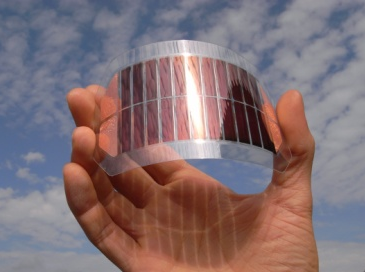RESEARCH INTERESTS
Quantum Information Processing
One of the great successes of quantum physics which is the long-lived Rydberg states of donor and acceptor impurities in silicon. Of particular interest because they can be exploited for quantum control of one atom by another are excited Rydberg states, where wavefunctions are expanded from their ground state extents of below 0.1 nm to several nm and even beyond; this allows atoms far enough apart to be noninteracting in their ground states to strongly interact in their excited states. For eventual application, a solid state implementation is very desirable, and we demonstrated the coherent control of impurity wavefunctions in the most ubiquitous donors and acceptors in a semiconductor, namely the phosphorous- and boron-doped silicon. Our experiments take advantage of a free-electron laser to stimulate and observe population times, photon echoes, the orbital analog of the Hahn spin echo, Rabi oscillations.
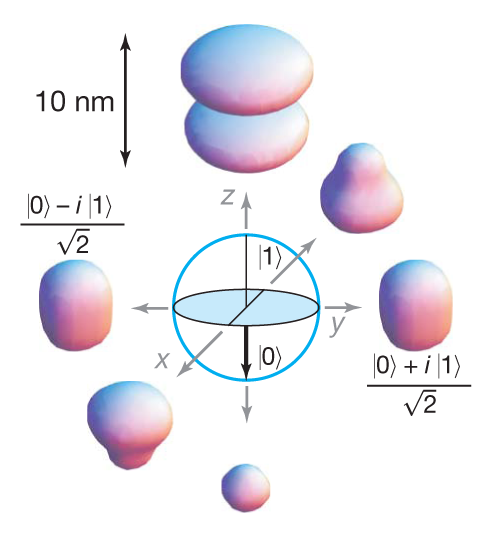
Diffractive optics
Traditional optics (mirrors, lenses, etc.) are expensive, massive, and can be spatially large while a diffractive optic offers the opportunity to reduce the large mirrors of any spaceborne instrument to a negligible thickness. Plastic membranes have been fabricated on silicon molds with diffractive optic structures. The thickness of these plastic membranes ~50 μm have nanostructures with optical properties to focus light as refractive lenses. The beauty of this concept is that once the diffractive optic is deployable, it is applicable to nearly every instrument (lidar, imager, spectrometer, etc.), at every possible wavelength (X-ray to millimeter, possibly further), and can yield a significant size and weight, and potentially even power reduction (SWaP) to enable new form factors for the majority of spaceborne instruments.

Light Detection and Ranging (LIDAR) applications
Terahertz spectroscopy of biomolecules in liquid water
Biomolecules solvated in their natural, liquid water environment exhibit a strong absorption in the terahertz region that contains information on their global and subglobal collective vibrational modes and global dynamical correlations among solvent water molecules and the biomolecule. Measurements in this region, however, are challenging due to the strong water absorption and often severe interference artifacts. In response, we have developed a highly sensitive, frequency domain, high resolution, vector network analyzer-based spectrometer that supports the accurate measurements of both the absorbance and refractive index of aqueous biomolecular solutions over this important spectral region. Using this system we have explored the complex dielectric response of solvated lysozyme protein over range 0.5 GHz to 1.1 THz as a means of probing the protein’s hydration shell and the large-scale dynamics. We make a direct comparison to the existing theoretical calculations and investigate the dependence of the low frequency dynamics on protein concentration and solvent pH. The discoveries shed light on the macromolecular motions in a biologically relevant water environment.
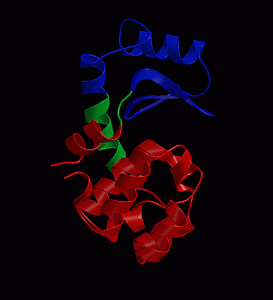
Domain motion due to the lowest frequency modes in
lyzsozyme and the hydration shell around the protein
N. Q. Vinh, S. J. Allen, and K. W. Plaxco, J. Am. Chem. Soc. 133, 8942 (2011).
Nanostructures for Terahertz frequencies
Following the success of III-V quantum cascade lasers (QCLs) at both mid-infrared and far-infrared (terahertz) frequencies, there is considerable interest in the development of silicon-based quantum cascade devices for low-cost sources and optoelectronic integration with other circuitry. The indirect band gap that has hindered interband emitter development in Si, Si1−xGex, and Ge does not affect QCLs, as they rely on carrier transitions within the same (conduction or valence) band rather than on exciton recombination across the band gap. Indeed, SiGe-based materials have a major advantage over III-V’s for this type of device, in that phonons are nonpolar, and this reduces the principal nonradiative scattering rate that limits the efficiency in III-V devices. This is particularly true at photon energies below the optical phonon energy which range is the subject of the present work. If a QCL could be realized in Si/SiGe, the lack of polar optical phonon scattering, the lower free carrier absorption, and the higher thermal conductivity of Si could allow significantly higher operating temperatures in the terahertz range. Moreover, there could be lower manufacturing costs involved with the mature silicon process technology.
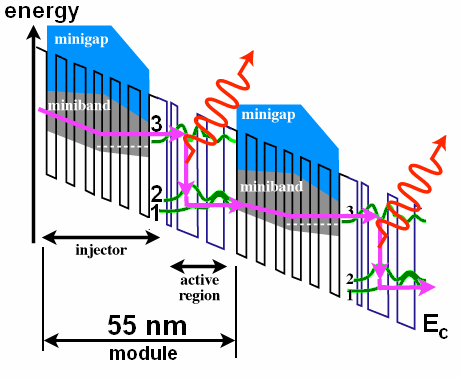
Photonic materials: Rare-earth doped semiconductors (GaN:Er and Si:Er)
Rare earth (RE) doped semiconductors have played an important role in various optoelectronic and photonic applications, ranging from emitting elements in solid-state lasers and in phosphors for color lamps and displays to optical fiber telecommunications and to quantum information processing. Among the various rare earth elements, Er has attracted a particular attention because the 4I13/2 to 4I15/2 transition involving nonbonding 4f shell electrons of the Er3+ ion occurs at the technologically important wavelength of 1.54 micrometer, matching the absorption minimum of silica-based optical fibers. GaN is expected to be an ideal host material for RE doping because it is a wide and direct bandgap semiconductor, which exhibits less thermal quenching and stronger RE emission at room temperature than RE-doped Si. As a result of a continuing research effort, GaN:Er-based light emitting diodes have now been developed.
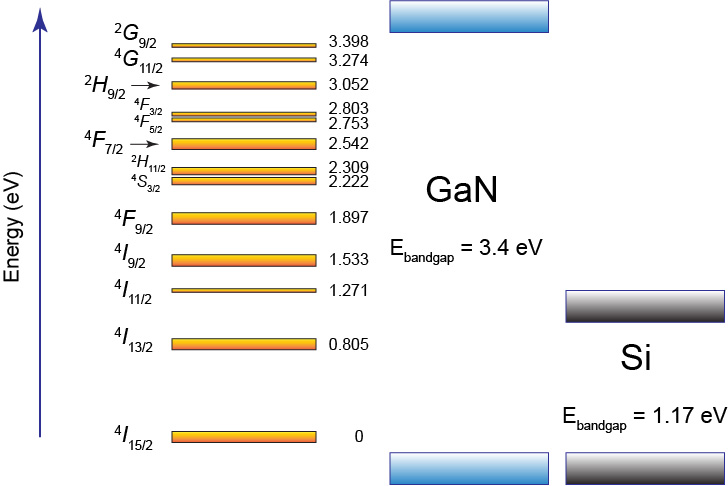
2. N. Q. Vinh, H. N. Ngo, and T. Gregorkiewicz, Review paper, The proceedings of the IEEE 97.
Structure and dynamics of aqueous solvation shells
Water plays an important role in chemical and biological processes. In aqueous solutions, water molecules dissolve ionic compounds, charged chemical species by forming hydration shells around them. Here we have employed a vector network analyzer-based spectrometer to measure the complex dielectric response of liquid water and aqueous solutions with unprecedented precision over the range 0.5 GHz to 1.1 THz. In doing so, we have obtained statistically significant evidence that the dynamics of water over this frequency regime are best described in terms of three Debye relaxation processes with the characteristic times of 8.56, 1.10 ps and 179 fs (at 25.0oC). The relaxation time and the amplitude of these processes allow us to understand the structure and the dynamics of water in the hydration shells around ions.
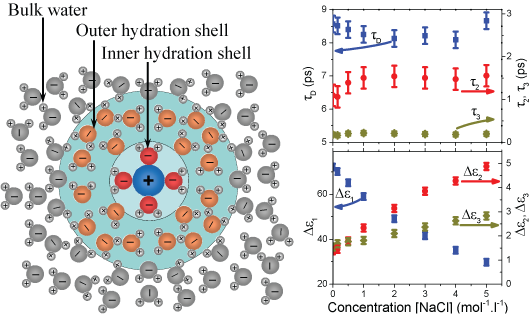
(left) Due to the high polarity, water molecules close to the dissolved ions
from the hydration shells. (right) The relaxation time constants and amplitudes
vary with salt concentration provide insights into the mechanisms underlying
these dynamic processes. The time constants of all three Debye processes are
effectively independent of salt concentration. Their amplitudes, in contrast,
vary significantly with changing salt concentration: while the amplitude of the
slowest relaxation falls with rising salt concentrations, the amplitudes of the
faster components increase with increasing salt concentration.
Organic Solar Cells
Solar-cell technology based on conjugated polymer-fullerene composites continues to be of interest as a potential source of renewable energy. In particular, because of the light weight, mechanical flexibility, and potential for low-cost production of electronic devices fabricated from semiconducting polymers, high-efficiency polymer solar cells could have a major impact on energy needs. Although encouraging progress has been made in recent years with 3-5% power conversion efficiencies, this efficiency is not yet sufficient for large-scale implementation. Moreover, concerns about instability at elevated temperatures have hindered the path toward commercialization. The need to improve the device efficiency and thermal stability requires state-of-the-art fabrication and treatment under more rigorously defined conditions. Therefore experimental investigation of their photophysical properties, in particular of the photogeneration of charge carriers, will yield important information that can clarify the mechanism of formation and the fate of the primary excitations as well as provide a basis for photovoltaic applications
